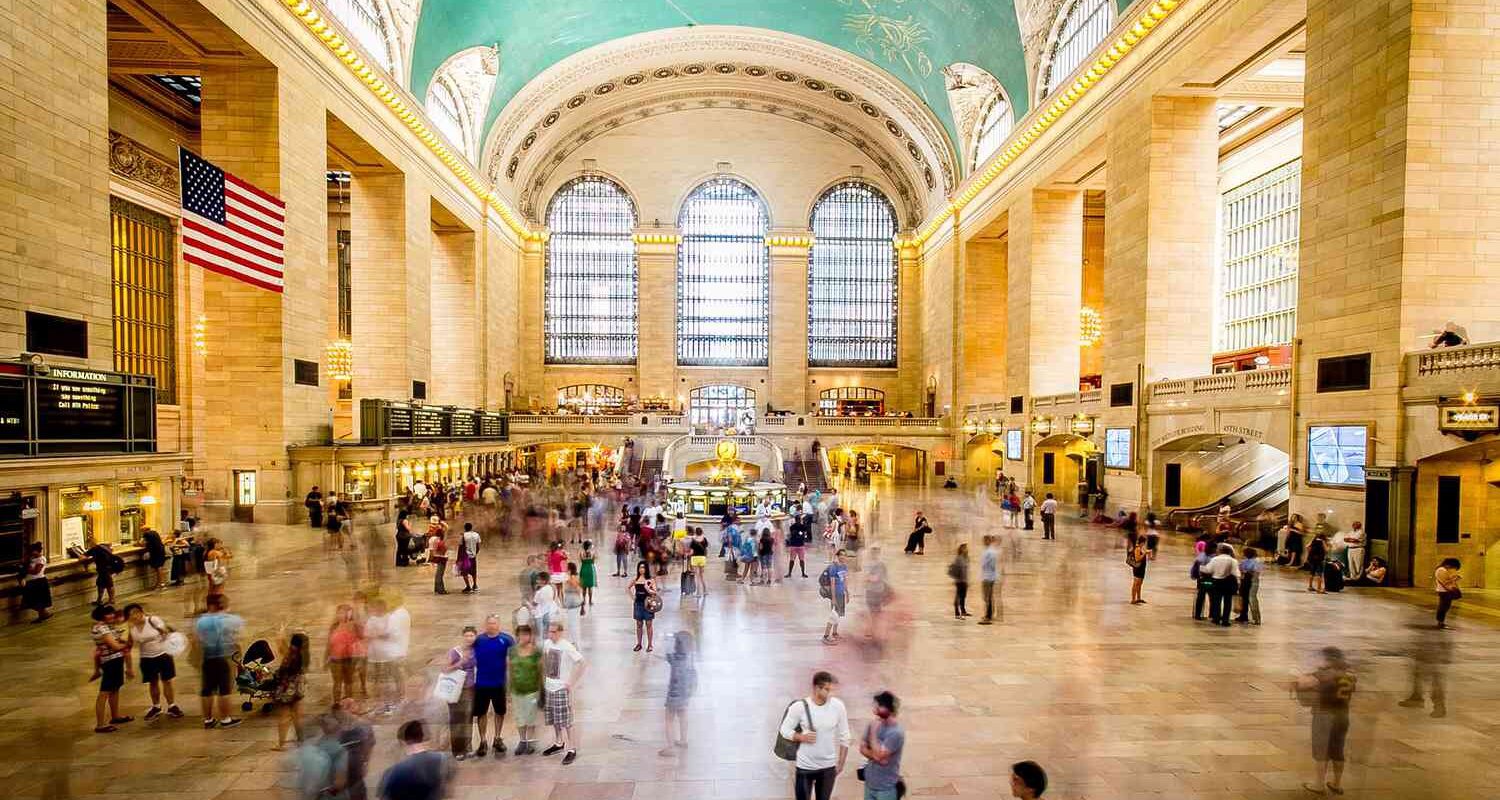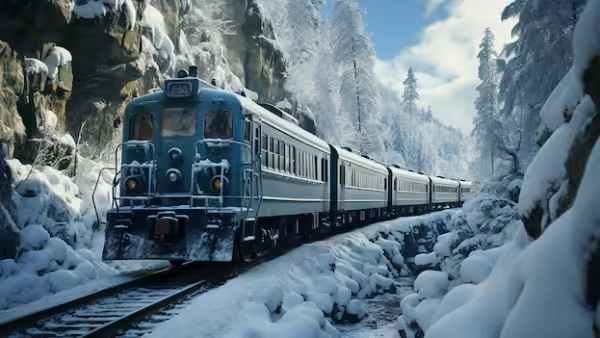Grand Central Terminal is The world’s largest railway station, Grand Central Terminal, is situated in Manhattan, New York, USA. Covering an expansive 48 acres, this iconic terminal boasts a total of 44 platforms, divided into two levels – 30 on the upper level and 30 on the lower level. With 26 patanias, totaling 67 patents, the terminal attracts approximately 7.5 lakh visitors daily.
Every day, a staggering 750,000 people pass through this bustling hub, making it the busiest train terminal globally. Today, we will be sharing some insider tips, tricks, and secrets to give you a fresh perspective on this iconic place.
Grand Central Terminal History
Grand Central Terminal, originally built by Cornelius Vanderbilt in 1871 with a total area of 69.8 acres, was initially known as Grand Central Depot. By the 20th century, the surge in commuter traffic necessitated the construction of a new terminal. Work on the current building commenced in 1903, requiring the removal of over 3 million cubic yards of rock and earth, the demolition of approximately 200 buildings, and the use of nearly 30,000 tons of steel—three times more than the Eiffel Tower.
Despite its vast size, much of Grand Central Terminal remains hidden, including its expansive underground train yard. On February 2, 1913, after a decade of construction and a total cost of $80 million (equivalent to nearly $2 billion today), Grand Central Terminal officially opened its doors.
Throughout its history, Grand Central has housed an art gallery, art school, newsreel movie theater, and rail history museum. During World War II, it served as the last rail stop for troops bound for Europe, with black-painted windows to prevent enemy targeting.
The terminal boasts 68 shops and 35 dining options, and over 700,000 people traverse the main concourse daily, equivalent to the entire population of San Francisco. The iconic clock in the main hall is a popular rendezvous spot, and the walls of glass were designed for ventilation, transportation, and illumination.
The celestial-themed ceiling, depicting the Mediterranean sky during the October to March zodiac, features 2,500 stars. In 1998, a 12-year restoration project commenced to eliminate decades of tar and nicotine from tobacco smoke, though a single dark patch still remains.
Grand Central’s most innovative feature is its ramps, allowing passengers to move seamlessly from train to street without climbing stairs. The acorns and oak leaves throughout the terminal symbolize the Vanderbilt family coat of arms.
Grand Central Terminal hosts one of the largest lost and founds in the country, with an average of 2,000 items lost each month—cell phones being the most common. Presently, the terminal operates 700 trains daily, employing 300 engineers and 750 conductors.
Ranked as the second most visited site in New York City, Grand Central attracts almost 20 million visitors annually, and nearly 70,000 rail tickets are sold daily, solidifying its status as one of the busiest railroad stations in the country.
Every Detail of Grand Central Terminal Explained | Architectural Digest
I’m Anthony W. Robbins, an author and historian of New York City. I’m Sam Roberts, the urban affairs correspondent of The New York Times. When you walk out of the subway, you can see Grand Central coming up from Park Avenue. The central arch, especially the central one, is very visible for anyone walking up Park Avenue from the south.
Whitney Warren, an American architect who studied in Paris and brought back a Parisian sensibility, designed Grand Central to resemble a French building dropped on the corner of 42nd and Park. The facade is spectacular, but first, let’s go inside. We’ll walk under the Pershing Square viaduct, one of the major entrances to the terminal.
Although one of the chief goals was to create a grand experience, as you enter New York, the station was designed when entering from outside the city. The entranceway is dedicated to Jacqueline Onassis, fittingly honoring her role in saving the terminal after the demolition of Penn Station.
As you turn left, you’ll see a plaque commemorating her involvement. The preservation battle to keep the terminal standing was crucial for historic preservation. The terminal has decorations reflecting the Vanderbilt family symbol, the acorn. Clocks are abundant in Grand Central, emphasizing the importance of synchronized time for travelers.
Heading down a ramp towards the main concourse, you’ll enter Vanderbilt Hall, the former main waiting room. The chandeliers in the hall weigh a ton and a half, and the raw, naked light bulbs emphasize the electrification of Grand Central, a remarkable feature in 1913. The decorative sculpture, including locomotive wheels and wings, symbolizes travel, commerce, speed, and the delivery of services.
The main concourse is the grandest space in Grand Central, resembling a secular cathedral. The ceiling, depicting constellations, holds 61 bright stars, each a light bulb. The blackened rectangle is a reminder of the tar and nicotine removed during the 1990s restoration.
The departure boards list times one minute earlier than the actual departure, a tradition dating back to the use of gates at track entrances. Ramps, an innovative feature, allows passengers to move seamlessly from trains to streets without climbing stairs.
The acorns and oak leaves throughout the terminal represent the Vanderbilt family coat of arms. Grand Central has one of the largest lost and founds in the country, with an average of 2,000 items lost each month. Today, the terminal runs 700 trains a day, employing 300 engineers and 750 conductors.




